Press Release: Veritas Press C.I.C.
Author: Kamran Faqir
Article Date Published: 18 July 2025 at 11:42 GMT
Category: Middle East | Syria | US-Israel At War
Source(s): Veritas Press C.I.C. | Multi News Agencies


Suwayda, Syria – What began as a localised kidnapping has erupted into full-scale conflict in southern Syria, exposing a volatile nexus of sectarian animosity, government duplicity, and foreign exploitation. The province of Suwayda, long seen as a relatively quiet bastion of Druze identity in Syria, is now the epicentre of a brutal power struggle that has not only engulfed local communities but also drawn in regional players, most notably Israel.
The renewed violence between Druze defence forces and Bedouin tribal militias has escalated sharply since July 11, when a Druze merchant was abducted on the road to Damascus. This single incident ignited a wave of retaliatory kidnappings, shootings, and mass mobilisations, all under the shadow of a Syrian government accused of collusion with sectarian extremists, and an opportunistic Israel intensifying its air campaign across the region.
“The reality on the ground is far more sinister than just communal tensions,” said Syrian political analyst Marwan Joundi. “This is a textbook example of divide-and-conquer, with the government enabling tribal militias, and Israel exploiting the resulting chaos to further dismantle Syria’s territorial integrity.”
Fighting Reignites In Sweida: Locals Caught Between Militias And Militancy.
Over the past week, verified videos from Sweida province have shown chaotic scenes of combat between local Druze militias and heavily armed Bedouin fighters, many of whom arrived in convoys from Deir Ezzor, Raqqa, and the Badia desert. Some footage, confirmed by Al Jazeera’s open-source unit, shows fighters wearing Daesh insignia insulting Druze prisoners using explicitly sectarian language.
“It was like a replay of 2015,” said a Druze resident of Qanawat, referring to the massacre carried out by ISIS in Sweida seven years ago. “Only this time, our own government let them in.”
This claim is echoed by the Syrian Observatory for Human Rights, which reported that several pro-government militias, including those previously active in Idlib and Homs, were seen fighting alongside tribal factions against the Druze Military Council, a self-organised defence body representing local Druze communities.
“The government didn’t come to mediate, they came to punish us,” said Adel Farhat, a former Syrian Army officer turned militia leader in Sweida. “They’re using the tribes as a proxy army, just like they did in Daraa, and now they’ve unleashed extremist fighters against us.”
UN officials are taking these claims seriously. In a briefing to the Security Council on July 17, Assistant Secretary-General Khaled Khiari warned that “credible reports of widespread violations, including attacks on Druze civilians, are emerging from Suwayda.” Khiari urged Damascus to conduct a “transparent and impartial investigation,” and condemned Israel’s parallel bombardment of southern Syria as “escalatory and destabilising.”
Government Denials Ring Hollow As Fighters Pour In:
Despite mounting evidence, Syria’s Interior Ministry continues to insist that no major redeployment is underway. “We categorically deny the veracity of what was published,” said ministry spokesperson Noureddine al-Baba, speaking to the state-run SANA news agency.
But local Druze leaders say otherwise.
“We saw the tanks and armoured vehicles coming from Damascus,” said a local sheikh in Shahba, who asked not to be named for fear of reprisals. “They coordinated their arrival with the tribal militias, and they didn’t fire a shot when those militias stormed our checkpoints.”
Human rights observers are increasingly alarmed by the Syrian government’s role. Amnesty International’s regional coordinator, Dana Hajar, said: “We are investigating credible allegations that state-aligned forces enabled, or at least tolerated, sectarian violence against the Druze minority. If verified, this may constitute a serious violation of international law.”
Israel’s Opportunism: Striking Syria While It Bleeds.
As Syrian factions fight among themselves, Israel has dramatically escalated its air campaign. According to regional news outlet Axios and verified tracking by Airwars, Israel launched more than 100 strikes across Syria in a single 24-hour window, including direct hits on military positions near Sweida, in Daraa, and on the Syrian Ministry of Defence in central Damascus.
Israel claims it is targeting Iranian-linked forces, but the scope and timing of the strikes suggest a broader agenda.
“Israel is not just degrading Iranian influence, it is shaping the battlefield in its favour,” said former UN diplomat Alastair Crooke. “By weakening the Syrian Army and encouraging internal fragmentation, Israel consolidates control over the occupied Golan Heights and prepares for deeper territorial penetration.”
In fact, documents leaked in 2021 and reported by Haaretz revealed Israeli plans dating back to 2013 to create a “Druze corridor” along the Golan-Sweida axis, supported by tribal factions and select Druze separatists. The goal: a fragmented southern Syria incapable of challenging Israeli expansion.
Israel is also facing domestic pressure from its own Druze citizens, many of whom have family ties in Sweida. Israeli Druze community leader Majdi Halabi told Channel 13: “We demand that the government protect our people in Syria. Humanitarian aid is not enough — they need real military support.”
Reports in Yedioth Ahronoth say at least 1,000 Israeli Druze have crossed into Syria in recent days to fight on behalf of the Druze population, prompting fears in Tel Aviv of domestic unrest if the government does not intervene more aggressively.
HTS And The Damascus Regime: Strange Bedfellows In Power:
Complicating the picture further is the role of Hayat Tahrir al-Sham (HTS), the al-Qaeda offshoot that once fought against both the Syrian government and ISIS, and now reportedly has de facto control of Damascus through the leadership of Ahmed al-Shara’a, also known as Abu Muhammad al-Julani.
Al-Julani’s regime has shocked many Syrians by pursuing open normalisation with Israel and the West. SANA has opened a Hebrew-language section. Israeli journalists have been granted access to the capital. And in a deeply controversial move, the Syrian government returned the remains of famed Israeli spy Eli Cohen in 2023.
“This is not a nationalist government. It’s a puppet regime installed to serve foreign interests,” said Beirut-based investigative journalist Nour Samaha. “Its crackdown on Palestinian resistance, its abandonment of Hezbollah, and its passive posture toward Israeli aggression make it clear where its loyalties lie.”
Even within Syria’s military ranks, frustration is growing. A Syrian army officer speaking to Middle East Eye said: “We lost over 700 men in a single day to Israeli bombs. And our leadership says nothing. No response, no air defences. What kind of sovereign nation allows this?”
A Nation Unravelling, Or A Moment Of Reckoning?
What is unfolding in Sweida is not merely a tribal dispute. It is a multilayered crisis exposing the erosion of Syrian sovereignty, the complicity of a compromised regime, and Israel’s ruthless regional calculus. The Druze community, long marginalised but fiercely independent, has become a litmus test for what remains of Syrian statehood.
“The people of Sweida have no illusions left,” said Sami Awad, a local activist. “Damascus will not save us. Israel will not protect us. We are caught in a war where we are both the target and the excuse.”
Ultimately, Syria faces a choice: continued fragmentation under foreign and sectarian domination, or a perilous confrontation to reclaim its sovereignty.
But as Israeli jets pound Damascus, and Bedouin militias advance on Sweida’s outskirts, the time for that decision may have already passed.
Conclusion: Manufactured Chaos, Strategic Annexation, Israel’s Shadow War On Syria.
The sectarian bloodshed in Sweida is not simply the consequence of a collapsing Syrian state; it is the product of a calculated, long-term strategy of destabilisation, manipulation, and occupation led by Israel and facilitated by a weakened, complicit Damascus.
For over a decade, Israel has steadily pursued a “buffer zone” policy in southern Syria, quietly transforming it into a zone of shadow governance, where Tel Aviv exerts de facto influence through tribal proxies, armed factions, and humanitarian cover. While publicly claiming neutrality or humanitarian concern, Israel has covertly backed select Bedouin tribal networks in southern Syria, offering arms, intelligence, logistical support, and safe passage to stoke confrontation with local Druze militias and dissolve any semblance of communal unity.
“Israel’s objective isn’t peace or protection, it’s permanent fragmentation,” said Dr. Hossam Nabulsi, a Damascus-based political researcher. “They’ve perfected the method: inflame sectarianism, weaponise grievance, support all sides selectively, and when the fire spreads, intervene as the firefighter.”
This “firefighter” model, inflaming the crisis and then appearing as its remedy, has allowed Israel to expand its influence without formal occupation. Through proxy rule, the sponsorship of tribal and sectarian actors, and precision airstrikes that eliminate Syrian military positions under the pretext of counterterrorism, Israel is now effectively governing parts of southern Syria from the shadows.
Crucially, Israel’s support for Bedouin factions is not incidental; it is instrumental. These tribes, historically marginalised, have now been drawn into a bloody campaign against the Druze under the guise of self-defence and retribution. But this mobilisation has broader utility: it allows Israel to fracture the Druze front, destabilise the region’s demographics, and lay the groundwork for full territorial encroachment, a slow-motion annexation that mimics Israel’s blueprint in the West Bank.
“Israel uses sectarian militias to destroy the fabric of Syrian society,” said Maher Sayegh, a human rights investigator based in Amman. “Then it redraws the borders. This isn’t just intervention, it’s annexation by other means.”
In parallel, the Syrian government, under the HTS-led regime of Ahmed al-Shara’a, has enabled this agenda, exchanging sovereignty for survival. Instead of defending Druze civilians or preventing tribal incursions, Damascus has become a passive actor, unwilling or unable to confront Israeli escalation. The return of Eli Cohen’s remains, the establishment of a Hebrew-language SANA portal, and the quiet normalisation of Israeli press access in Damascus point to a dangerous normalisation of submission, one that has allowed Israel to act with total impunity.
The evidence is overwhelming: Israel is not merely responding to chaos, it is engineering it, nurturing proxies like select Bedouin tribes while launching decapitation strikes against Syria’s military infrastructure. The aim is clear: to erase southern Syria as a sovereign entity and to transform it into an Israeli-controlled buffer, stripped of resistance, fragmented along sectarian lines, and permanently disconnected from the Syrian national project.
In this landscape, Sweida is more than a flashpoint; it is a test case. A model of how to destroy a community from within, fracture a nation at its seams, and replace resistance with confusion. If Israel succeeds here, it won’t stop at Sweida. The road to annexation, paved with airstrikes, sectarian bloodletting, and betrayal, will stretch far beyond the Golan.
“We are not witnessing a civil war,” warned one Druze fighter. “We are witnessing the slow theft of our homeland, village by village, under the cover of chaos.”
Unless the Syrian people, and what remains of their fractured state, recognise and resist this strategy, Israel’s shadow war will achieve what bombs alone could not: the absolute annexation of southern Syria, without ever raising its flag.
Advertisements
Tags:


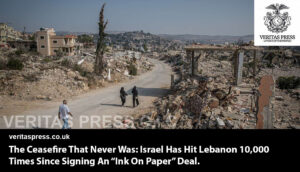





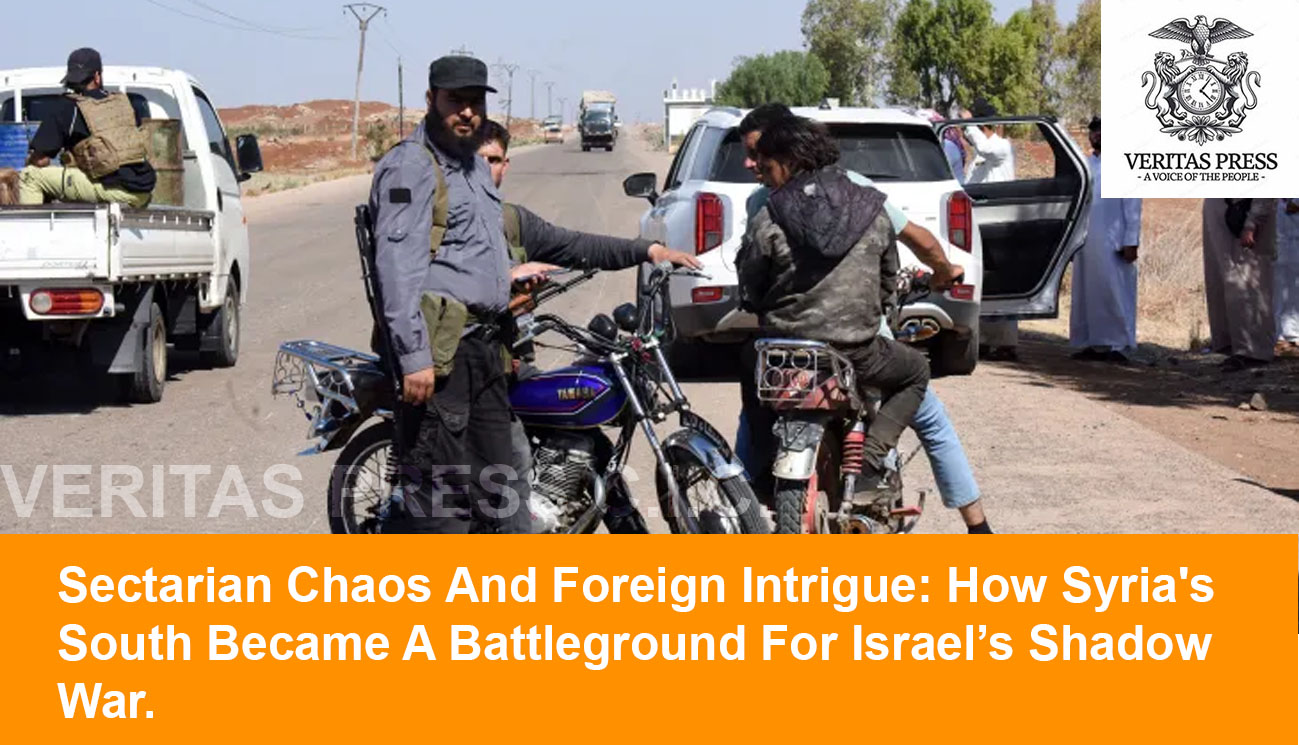
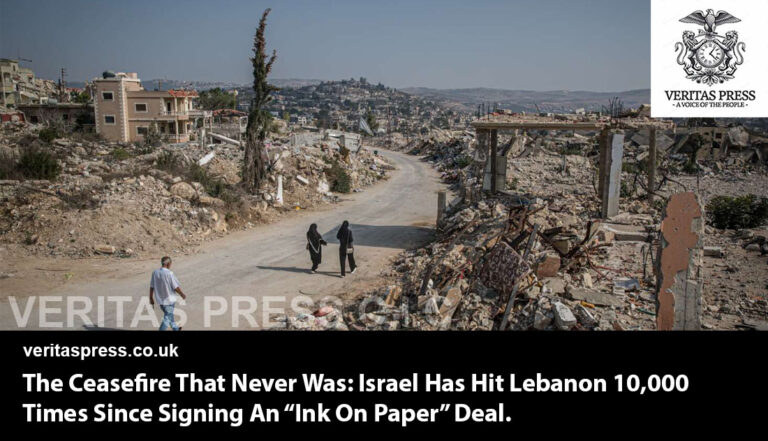






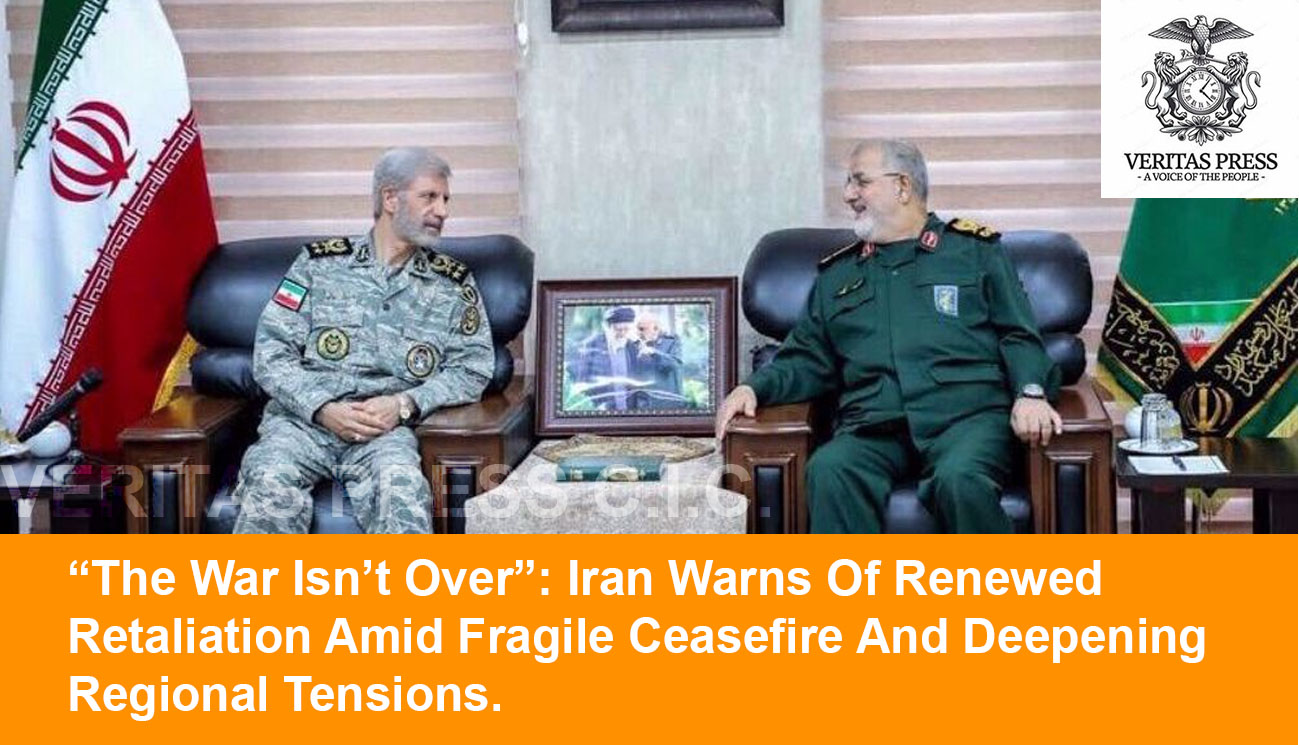
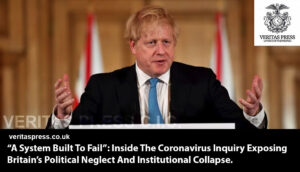


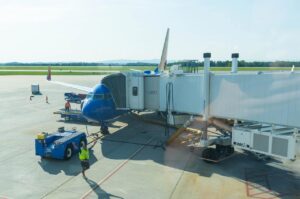







Leave a Reply